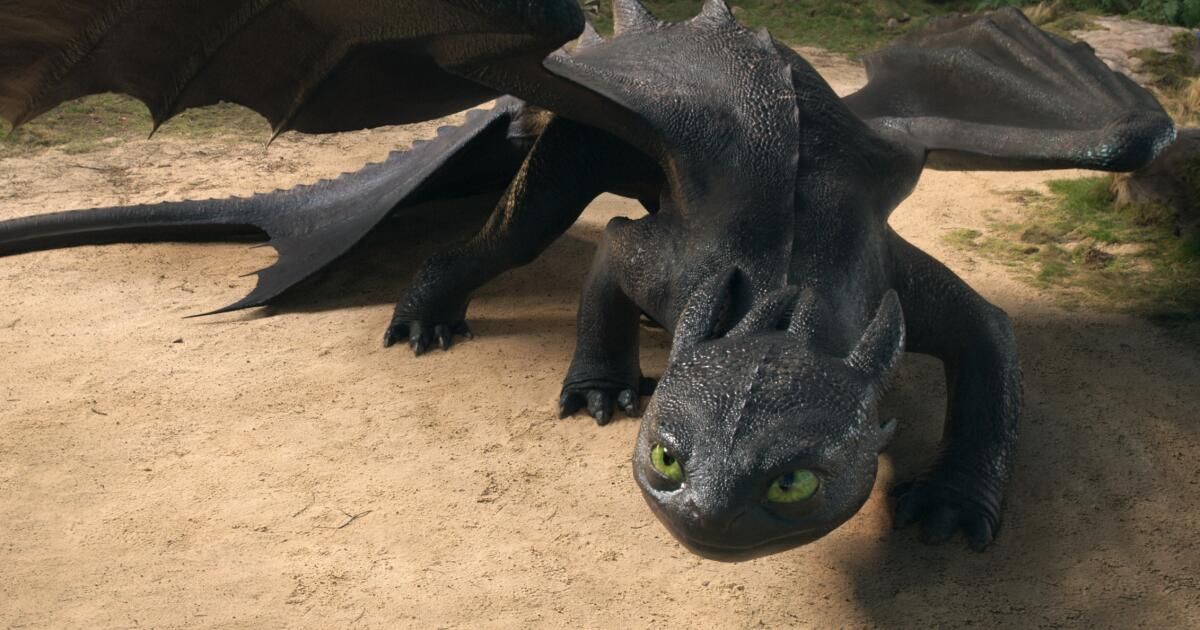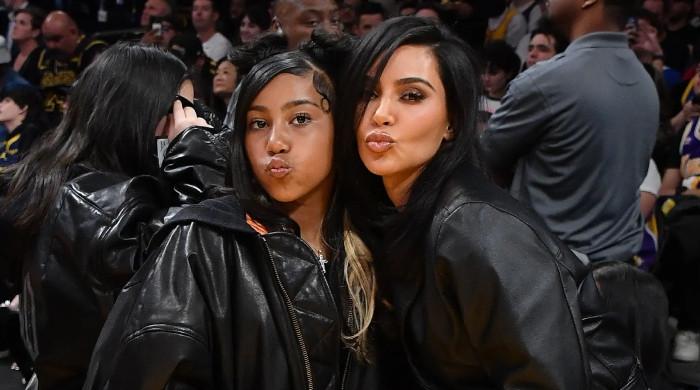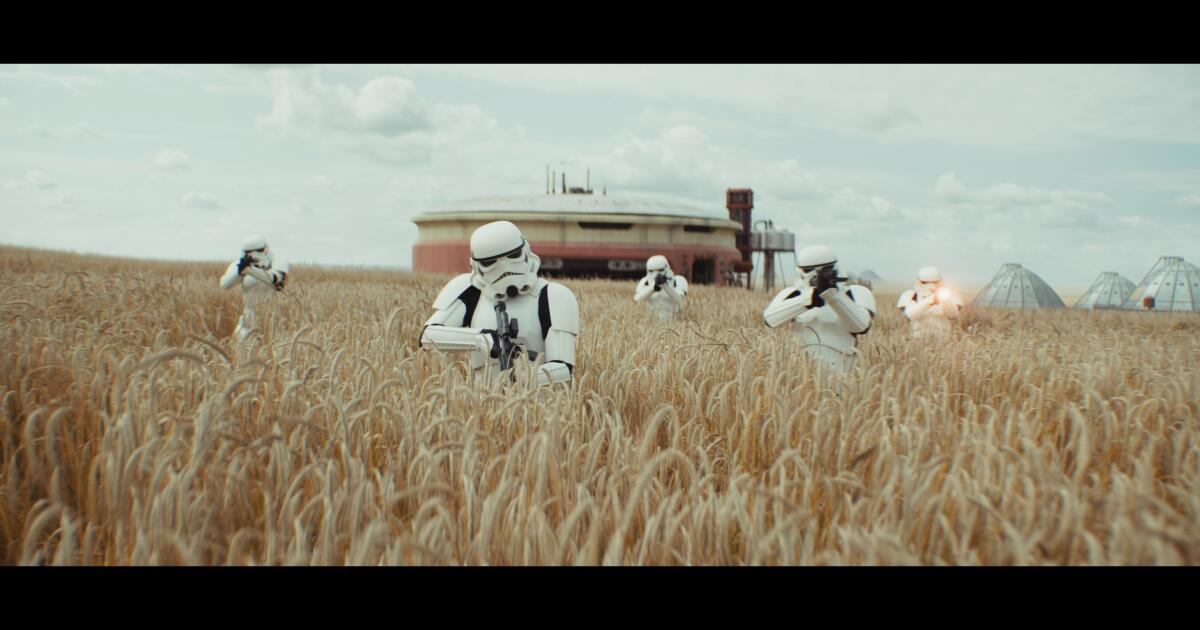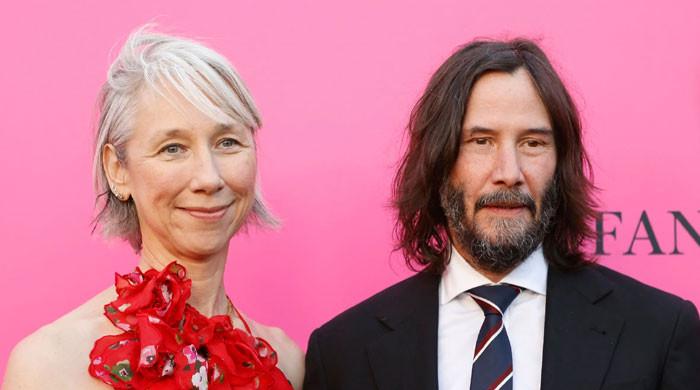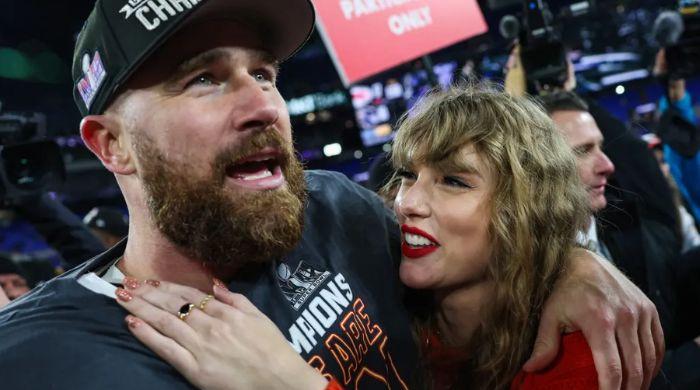Whether it comes out through heaven or shares a playful moment with her best human friend, without teeth, the dark dragon with a friendly face and an injured tail, disarms you with her endearing nature.
It is not surprising that it has become the emblem of the animated films of “How to train your dragon”, the first of which arrived in 2010. (Since then, there have been two sequelae, three separated television series and five shorts). A favorite of Gen-Z fans, Tothless now returns to the big screen in a new hyperrealist iteration for the rowing of live action, now in the treasors.
And in an unprecedented movement, Dean Deblois, who directed the three animated films of “Dragon”, as well as the original “Lilo & Stitch of 2002, along with Chris Sanders, he was asked to direct the re -avention of live action. It was his priority to preserve the essence without teeth.
“He is our most recognizable dragon within the whole assortment,” says Deblois by phone. “And it has a lot of sensitivity and personality that appears. And much of it is expressed in this face that is quite similar to the stitch with large eyes, the plates of the ears and wide mouth.”
In fact, all the live action effort depended on whether Tothless could be properly translated as a photorealist dragon between human actors and physical sets, while retaining the charm of animated films.
An image of the original animated of 2010 “How to train your dragon.”
(DreamWorks Animation LLC)
According to Christian Manz, the visual effects supervisor of the new film, when Peter Cramer, president of Universal Pictures, initially considered the project in 2022, was not convinced that Tothless would work. His touchstone for a fantastic creature that successfully achieved credibility was Hippogriff, a winged four -legged creature seen in “Harry Potter and the prisoner of Azkaban” of 2004.
To prove the viability of a new one without teeth, Dreamworks recruited the British visual effects and the Framestore computer animation equipment to spend three months trying to create a “realistic” version of Tothless. Framestore has had some popular successes in his name: Paddington Bear in the films series, Dobby of the “Harry Potter” and Groot and Rocket Raccoon universe of Marvel movies.
“We always knew that we were not pointing to a real dragon, as in a dragon of 'Game of Thrones', says Manz, through video calls from the United Kingdom
The Toothless design, particularly its facial characteristics, presented a challenge for Manz and the Framestore team. If they made their eyes or mouth too small or if they tried to drastically remodel their heads with more naturalism in mind, he quickly lost his personality.
“His big and expressive face with eyes that are larger than any animal in the animal kingdom, including the blue whale, had to remain because, without them, we felt that we were going to offer a minor version of Toothless,” says Deblois.
A show on the stage based on the first film called “How to Train Your Dragon: Live Spectacular”, which toured Australia and New Zealand in 2012, radically changed the design, to a mixed answer. “Tothless was too similar to a creature and was not so attractive and charming,” says Simon Otto, chief of characters animation for the three animated films, through Zoom.
While they can be too subtle so that a spectator does not realize, certain design changes have been made that differentiate the real action tempting from his animated counterpart.
“Now it's bigger, his head is smaller, his eyes are really smaller,” says Manz. The nuanced reorganization of his head and his body was intentional: an effort to make him mix with a photorealist world.
“The interesting thing is that when people see the live action movie, they say: 'Oh, it's without teeth, as if I left the animated film,” says Deblois. “But really, if you put them next to each other, you will see enough differences.”
The texture of the body without teeth should be more complex for the live action version, so it would feel more convincingly integrated into environments.
“In animation, it's quite soft,” says Manz. “We tried a skin very similar to the snake, but it simply made it look very hostile. You will not want to put your hand on the forehead.”
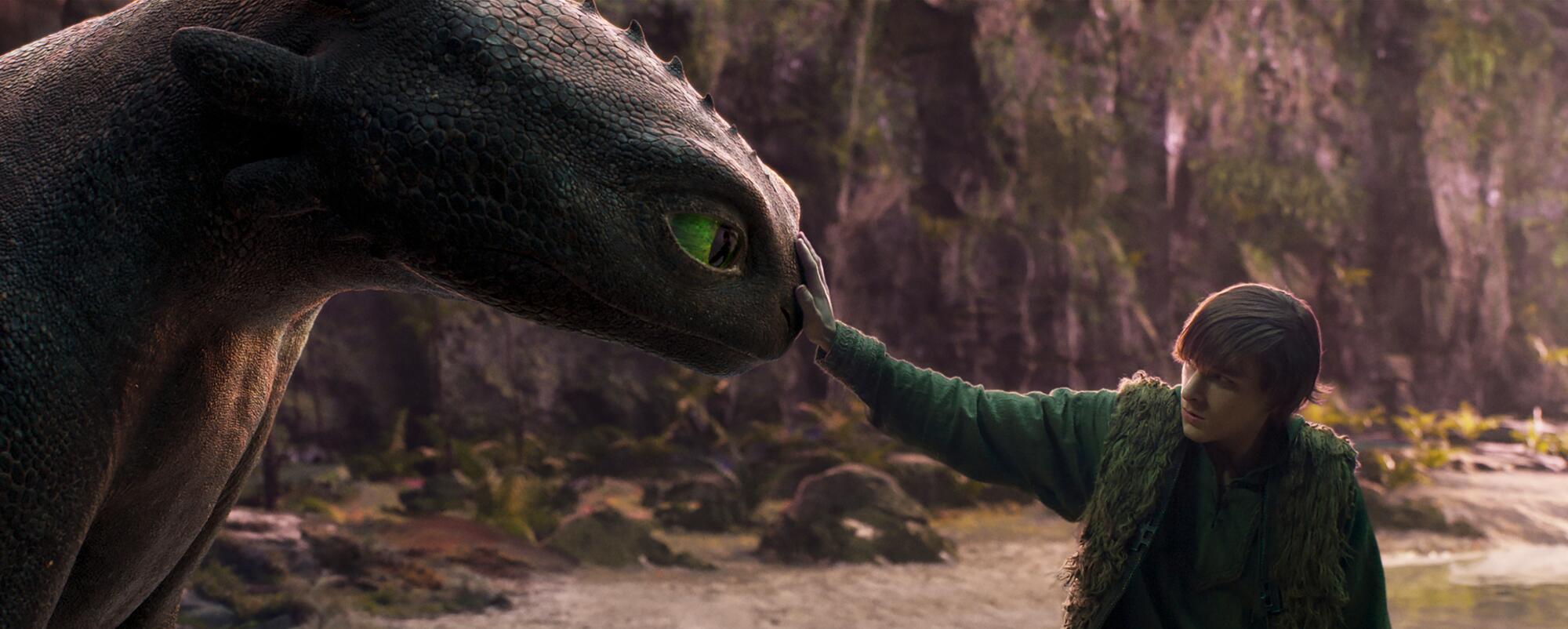
Mason Thames in “How to train your dragon.”
(Universal Pictures)
Both versions on the Toothless screen were prepared essentially using the same digital technique: computer animation. The difference here is that the one who intended to share space with a world of flesh and blood, with different aesthetic concerns. Even if looking for realism in creatures that only exist in our imagination may seem contradictory, the goal is to make them feel palpable within their invented kingdom.
“One of the things that I do not like about live action remakes is that they seem to try to replace the animated source, and I am very protective,” says Deblois with refreshing frankness. “We try to create a version that lives next to it. Follow the rhythms of that original story, but it brings new depths and an expanded mythology and more immersive moments of action and flying. But you are never trying to replace the animated film because I am very proud of that movie.”
Toothless, as we know now, originated expressly for the screen. The original Toothless in Cressida Cowell is Tiny and Green (a design that can be seen in the first animated film in the form of a tiny dragon known as terrible terror).
But when you debate and Sanders on board, 15 months before the launch of 2010, replacing the previous directors, their first important change was to make Toothless a dragon that could ride.
It was the screen protector of a black panther that first inspired the appearance of the teeth in animated films. Otto, one of the designers who knows Tothless better (he took out the original in 2008), recalls his real -world animals references.
“It is a mixture between a bird bird, like a pilgrim falcon, with extremely simplified shapes, of course, a feline but also a Mexican salamandra called Axolotl,” says Otto. Sanders's design for the Disney superstar stitch, namely his big eyes, ears and almond -shaped mouth, also influenced the design.
“There is a small influence of Stitch's design on the face without teeth that makes them feel as if they were distant cousins,” says Deblois.
He believes that making tempting look more to a mammal, instead of a reptile, and giving pets similar to pets were the keys for him to become so memorable.
“[We] I spent a lot of time on YouTube watching videos of dogs and cats doing funny things, “he says.” And we try to incorporate a lot of that behavior into the tempting with the hopes that when people saw the movie, they would say: 'That is like my cat' or 'My dog does that'. We wanted him to feel like a great pet. Fierce and dangerous at first, but then a great tender cat later. “
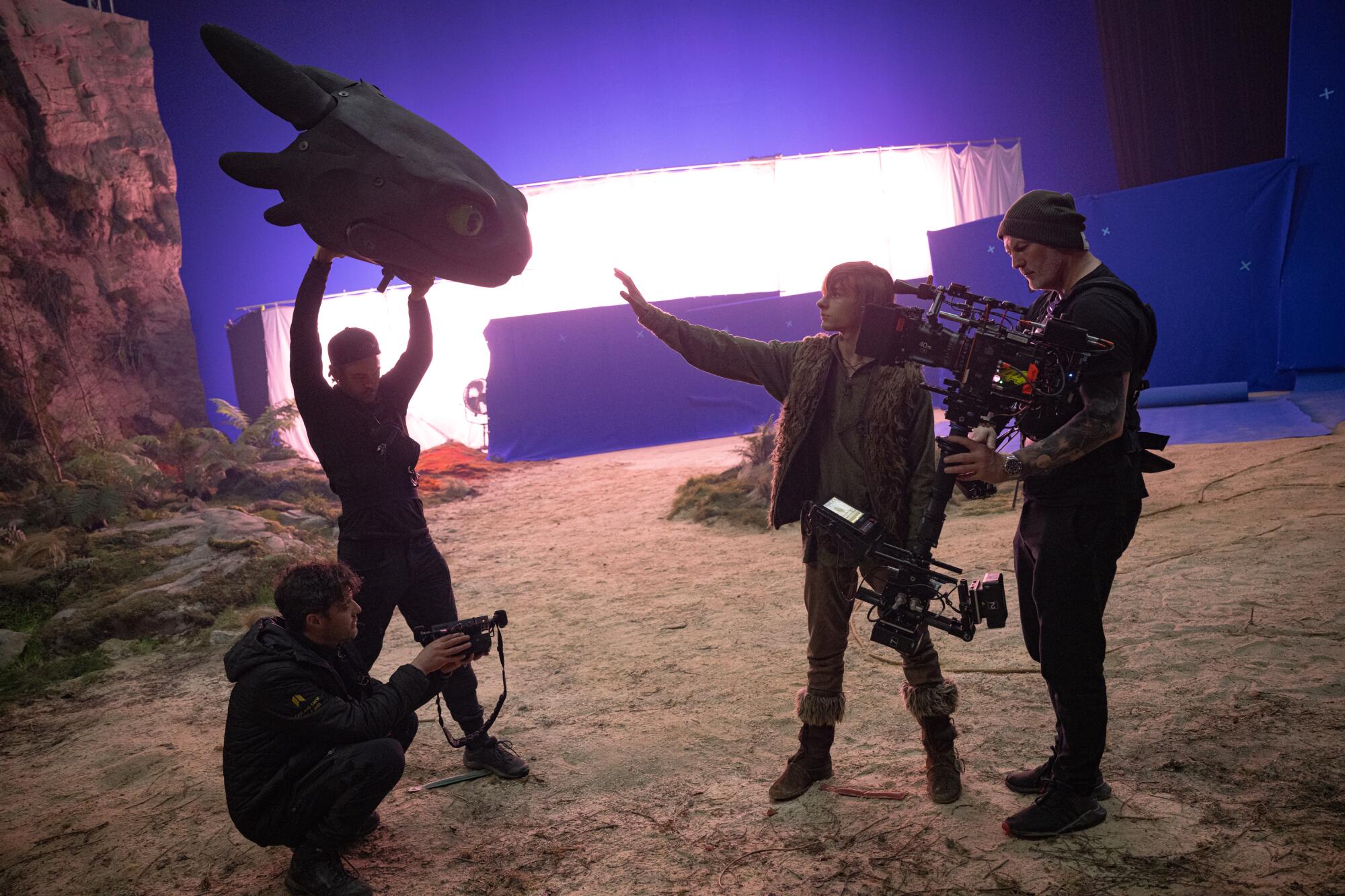
Mason Thames interacts on the set with the puppere version of Toothless.
(Helen Sloan)
In the set of the live action movie, Toothless and the other dragons existed as large puppets with simple functions, operated by a team of master titles led by Tom Wilton, an artist who had worked in the play “War Horse”.
Using puppets was destined to provide the actors, especially Mason Thames, who plays Hiccup, a real -world scenemate. The foam puppet without teeth had an articulated jaw and articulated ear plates that allowed a subtle and interactive performance.
“There is an action that Dean can direct and that Mason and the other actors could act, so that the interaction is completely credible,” says Manz. “[The puppets] Obviously they are eliminated from the frame at the end, but it only means that you create that connection. “
As for the impressive flight sequences, in which Hiccup rides without teeth, the production created an animatronic dragon placed in a giant cardan that moved in six different axes to simulate the wheel physics.
“If the dragon being diving or ascending or banking and rolling, Mason would be thrown into the chair, like a rider on a racing horse,” says Deblois. “And he married the animal in a way that felt really authentic.”

Mason Thames rides the flyer without teeth in an animatronic model.
(Helen Sloan)
Despite all its success in the animated kingdom, Deblois has never directed a live action movie so far.
“I praise Universal for risking me knowing that I had not made a live action movie, but also recognizing that I knew where the heart and wonder was, and I was determined to take her to the screen,” he says.
Otto, the designer who trained without teeth against anyone else, says that he would have “urinated to the pants” if he knew that the drawings he made in 2008 would generate a franchise and an attraction of the theme park (a recreation of the island of Berk's films opened in Universal Studios Florida earlier this year).
“The most critical choice they did for live action was to make sure the audience falls in love with the top,” he adds. “And you understand that if you have a creature like that like your friend, you wouldn't give up.”

